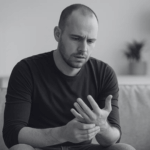Pivotal Trial Aims to Improve Overall Function and Quality of Life
PhotoPharmics, a pioneer in specialized phototherapy for neurodegenerative diseases, alongside the Center for Health + Technology (CHeT) at the University of Rochester Medical Center (URMC), today announced the initiation of a groundbreaking pivotal trial. The “Celeste Light for PD Trial” (found at lightforpd.com) represents a significant stride in Parkinson’s disease (PD) treatment, leveraging innovative Spectramax® technology through the passive and non-invasive Celeste phototherapy device.
This pivotal trial will assess the efficacy of Celeste, the company’s FDA Breakthrough phototherapy device to improve non-motor and motor function and quality of life in Parkinson’s disease (PD). The Celeste device builds on the company’s innovative Spectramax technology that has been successfully used in previous human research. This 300-patient phototherapy trial will be the largest trial of its kind.
Kent Savage, President and CEO of PhotoPharmics, underlined the importance and anticipation surrounding the trial. “After overcoming funding challenges and delays caused by the global pandemic, we are thrilled to launch this trial, which holds immense promise for those affected by Parkinson’s Disease,” he stated. The trial follows the FDA’s Breakthrough Device Designation for the Celeste device in April 2020, acknowledging its potential in treating PD.
Dan Adams, Chief Science Officer at PhotoPharmics, reflected on the significant outcomes of the previous trials. “Our initial trials demonstrated remarkable improvements in both quality of life and non-motor symptoms for PD patients, offering a new horizon in PD treatment,” Adams said. The MDS-UPDRS Parts 1+2 and the PDQ 39 showed very large clinical benefit, indicating substantial improvements in patients’ day-to-day function and quality of life.
The Celeste phototherapy device is based on the understanding that PD damages the retina and impacts the circadian system and various symptoms such as tremor to sleep, cognition, depression, and fatigue. Targeting photoreceptors in the eye responsible for circadian signaling, Celeste offers a unique and non-invasive treatment approach.
Dr. Ray Dorsey, Professor of Neurology at URMC and lead investigator, emphasized the trial’s at-home, telemedicine-based format. “The convenience of assessing patients’ progress at home makes this trial particularly relevant and accessible,” he noted. This approach allows for broader participation, including individuals in remote locations.
The six-month trial will involve 300 participants enjoying the Celeste device daily during their usual evening activities. This non-invasive therapy complements current medical care, requiring no alteration to existing medical regimes. The telemedicine approach improves access to care by delivering an FDA breakthrough therapy to patients nationwide independent of their proximity to major clinics.
The Celeste trial is poised to address the widespread, critical unmet needs such as sleep disturbances, fatigue, depression, anxiety, and cognition for which there are currently no FDA approved therapies. These symptoms are often more debilitating than motor symptoms and can significantly deteriorate the quality of life.
“A pivotal trial for medical devices is similar to a phase 3 trial drug trial,” said Dan Adams, chief science officer. “As patients reported in our prior trial, this may be the only treatment that improves functional abilities in PD when administered on top of current medication. We recently presented our new trial design to the FDA with a favorable review.”
Participating in the Trial
People with Parkinson’s disease and their caregivers may apply to participate in the trial at https://www.lightforpd.com/.
Qualified participants will receive up to $500. No additional pills, surgery, or even doctor’s visits are required. The entire study will be in the comfort of the participant’s home with Zoom video interactions with the medical team.
Focus of the Trial
Current treatments for PD primarily treat motor symptoms, and very few options exist for the debilitating non-motor problems that are also part of the disease. As Parkinson’s progresses, these non-motor issues become even more pronounced and are often the determining factors for quality of life and institutionalization.[1] In fact, the Movement Disorders Society has identified these debilitating non-motor problems as a major unmet therapeutic need.[2]
The LIGHT-PD clinical trial represents a potentially monumental step in PD research and treatment. With its non-invasive approach, broad eligibility criteria, and telemedicine-based design, it stands as a beacon of hope for many. The collaboration between PhotoPharmics and CHeT underscores a commitment to pioneering research and a shared vision of improving the lives of those affected by Parkinson’s Disease.
About CHeT
The Center for Health + Technology (CHeT) is a clinical research organization within the University of Rochester. Their team designs and conducts multi-center clinical trials with collaborators from across the globe to accelerate clinical research and advance the development of therapeutics, benefiting individuals in our community and beyond. Since its inception over three decades ago, CHeT has reshaped the conduct of clinical trials, from incorporating novel technologies into clinical trial design to modeling disease progression. Learn more at https://www.urmc.rochester.edu/health-technology.aspx.
About PhotoPharmics
PhotoPharmics is a privately held, clinical-stage medical device company developing next-generation treatments for treating neurodegenerative disorders through the eyes. Company founders have 30+ years of research and experience in this field. They previously developed specialized light solutions now widely used to regulate circadian rhythms for seasonal affective disorder, sleep disorders, anxiety, and depression (acquired by Philips-Respironics in 2007).
Drawing from research and recent trials, PhotoPharmics is developing applications of specialized light across several neurodegenerative diseases. The company aims to make a clinically meaningful difference in patients’ lives by delivering safe and effective treatments. Learn more at www.photopharmics.com.
[1] Schapira, A., Chaudhuri, K. & Jenner, P. Non-motor features of Parkinson disease. Nat Rev Neurosci 18, 435–450 (2017).
[2] Seppi K, Ray Chaudhuri K, Coelho M, Fox SH, Katzenschlager R, Perez Lloret S, Weintraub D, Sampaio C, collaborators of the Parkinson’s Disease Update on Non‐Motor Symptoms Study Group on behalf of the Movement Disorders Society Evidence‐Based Medicine Committee, Chahine L, Hametner EM. Update on treatments for nonmotor symptoms of Parkinson’s disease—an evidence‐based medicine review. Movement Disorders. 2019 Feb;34(2):180-98.
###
PR11101






